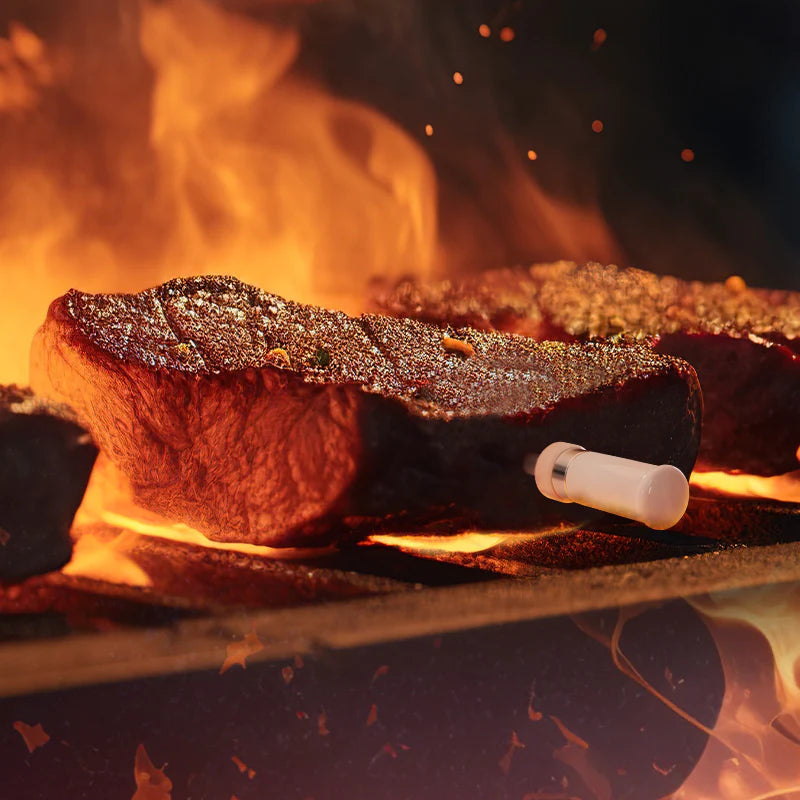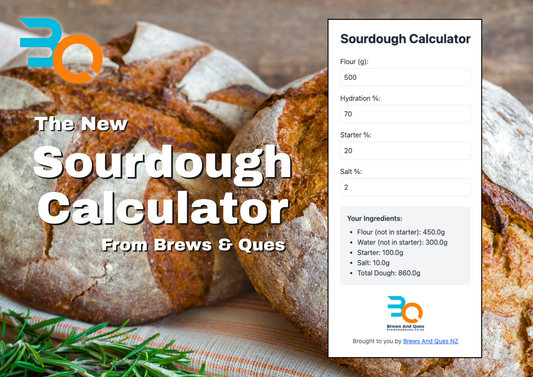Introduction
When it comes to cooking, precision is key. It’s not just about following recipes to the letter; it’s also about ensuring your ingredients, particularly meats, reach the perfect temperature for safety and taste. This is where temperature probes and meat thermometers come into play. If you’re new to the culinary world or just starting to experiment with more complex cooking techniques, understanding how to use these tools can significantly enhance your cooking experience. In this comprehensive guide, we’ll delve into the basics of using temperature probes and meat thermometers, ensuring every meal you prepare is a culinary success.
The Importance of Correct Temperature in Cooking
Before we explore the tools themselves, it’s crucial to understand why temperature matters in cooking. Cooking meats to the right temperature isn’t just about achieving the perfect texture and flavour; it’s also a matter of safety. Undercooked meats can harbour harmful bacteria like Salmonella and E. coli, which can lead to food borne illnesses. On the other hand, overcooking can result in dry, tough, and unappetising dishes. The key to avoiding these pitfalls is to cook your meats to the recommended internal temperatures, as outlined by food safety authorities.

What Are Temperature Probes and Meat Thermometers?
A temperature probe, often referred to as a meat thermometer, is a tool used to measure the internal temperature of meats and other foods. There are several types of meat thermometers available:
-
Instant-Read Thermometers: These are quick and provide a temperature reading within seconds of insertion. However, they are not designed to remain in the food while it cooks.
-
Oven-Safe Dial Thermometers: These can be left in the food while it cooks in the oven, providing a continuous temperature reading.
-
Digital Probe Thermometers: These come with a probe attached to a long cord. The probe stays in the food in the oven, and the digital reader remains outside, displaying the temperature.
-
Smart Thermometers: These are the latest innovation and can connect to a smartphone app, providing real-time temperature readings and alerts.
Choosing the Right Thermometer for Your Cooking Needs
When selecting a meat thermometer, consider the type of cooking you’ll be doing most. If you’re into grilling or quick stovetop cooking, an instant-read thermometer is ideal. For long roasting or baking, an oven-safe thermometer or a digital probe thermometer would be more suitable. Smart thermometers are perfect for tech-savvy cooks who appreciate the convenience of remote monitoring.

How to Use a Meat Thermometer Correctly
Using a meat thermometer correctly is paramount for accurate readings. Here’s a step-by-step guide:
-
Insert the Probe in the Right Spot: The probe should be inserted into the thickest part of the meat, away from bone, fat, and gristle. For poultry, insert it into the inner thigh area near the breast.
-
Depth of Insertion: The probe should be inserted at least halfway into the meat. For thicker cuts, aim for the centre.
-
Reading the Temperature: Wait a few seconds for the temperature to stabilise before reading. For oven-safe and digital probe thermometers, you can check the temperature without opening the oven door.
-
Know the Recommended Temperatures: Familiarise yourself with the recommended internal temperatures for different types of meats. For example, poultry should reach an internal temperature of 74°C, while steaks are safe at 62°C for medium-rare.
Cleaning and Maintaining Your Thermometer
To ensure longevity and accuracy, it’s important to clean and maintain your thermometer. Clean the probe with hot, soapy water after each use, and dry it thoroughly before storing. Avoid immersing digital models completely in water. Check the manufacturer’s instructions for specific maintenance tips.

Troubleshooting Common Issues
Sometimes, you may encounter issues like fluctuating readings or a thermometer that stops working. In such cases, check the battery (if it’s a digital model) and ensure the probe is inserted correctly. Calibration might also be necessary to maintain accuracy.
The Role of Temperature Probes in Different Cooking Methods
Whether you’re grilling, roasting, baking, or frying, temperature probes can be your best ally in the kitchen. They help ensure that your meats are cooked to the perfect doneness, enhancing both the safety and flavour of your dishes.
Conclusion
Mastering the use of temperature probes and meat thermometers is a fundamental skill for any aspiring chef or home cook. By understanding the importance of cooking meats to the correct temperature, choosing the right thermometer for your needs, and using it correctly, you can take your culinary creations to the next level. Remember, a good meal is a safe and delicious one, and with the right tools at your disposal, you’re well on your way to achieving both.
For more information about our range of Meat Temperature Probes, please check out our Temp Probe Collection page, give us a call on









